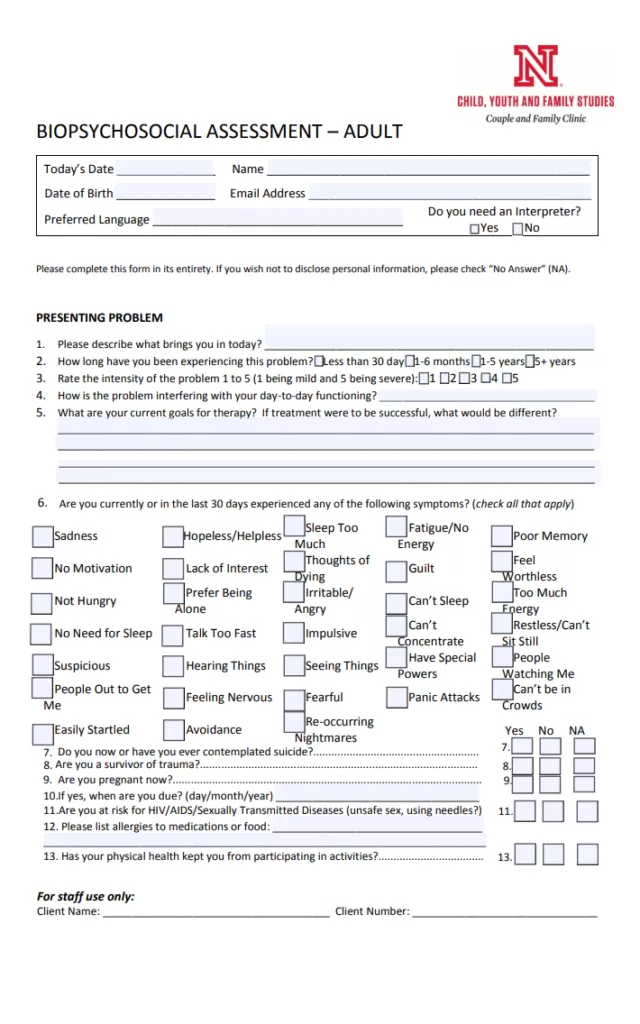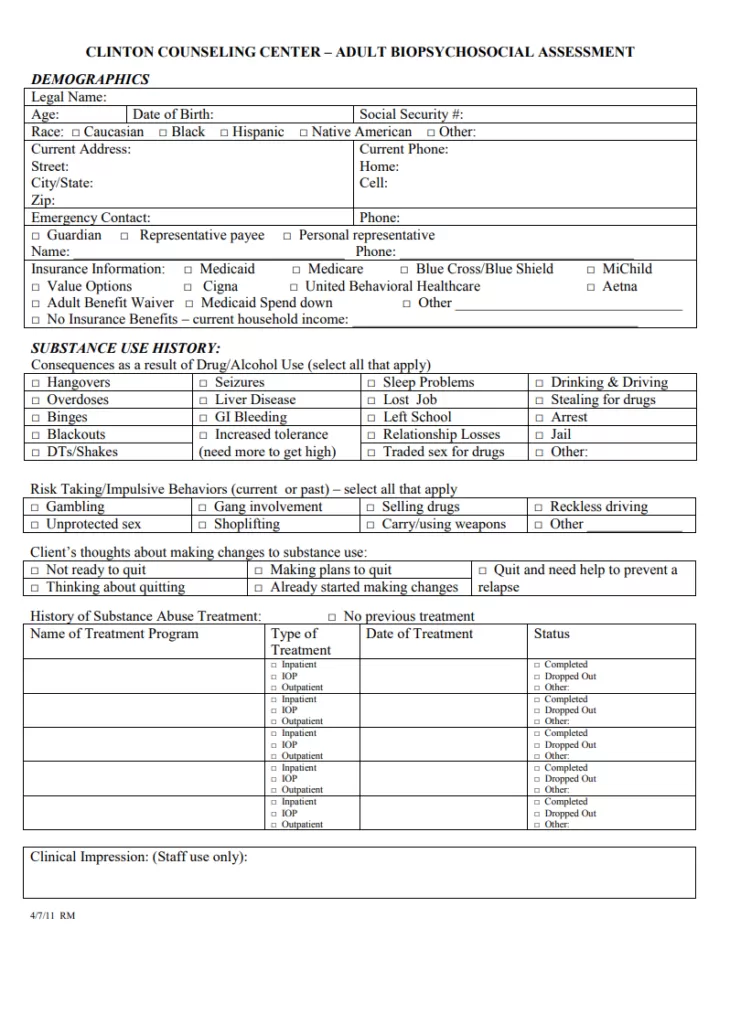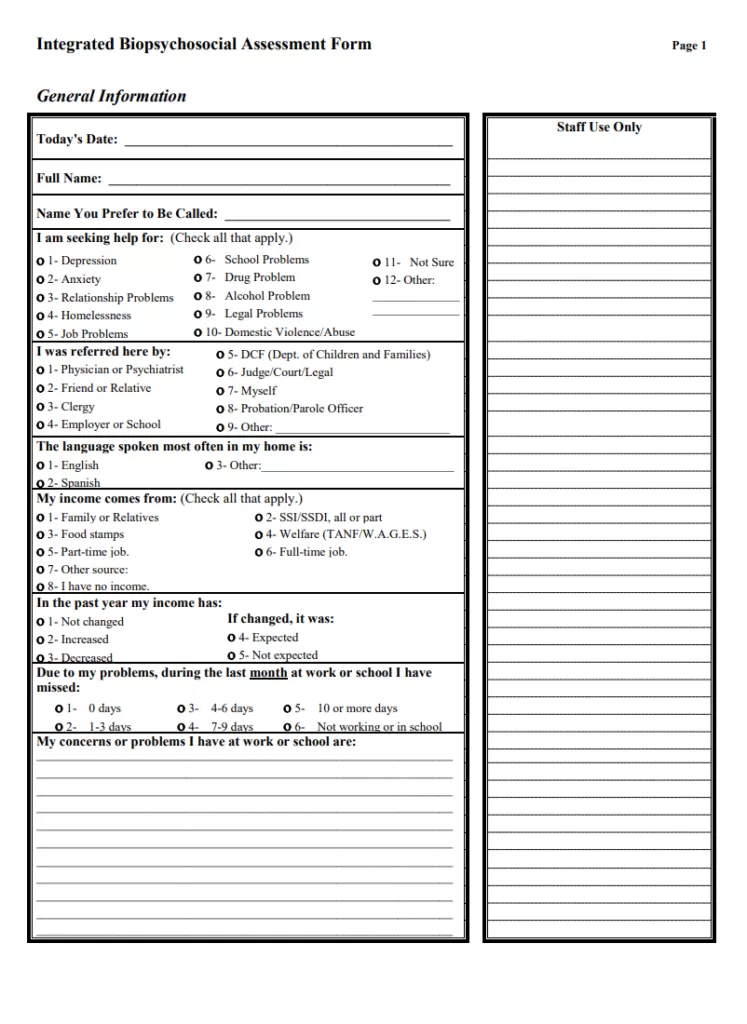A biopsychosocial assessment template is a tool that is widely used by scientists and researchers to evaluate the condition of volunteer patients fighting with different unique diseases. They observe their medical conditions by applying different antibodies along with other medical procedures. Their purpose is to conduct different experiments on volunteers to find cures for deadly diseases. In other words, the biopsychosocial assessment is an analytical procedure carried out by physicians which enables them to study their patient’s health from all three perspectives. This assessment can be a little time-consuming, but it is proven to be effective in finding the best cure for the patient. It is usually conducted at the start, when the patient is first assigned to their respective physician. The physician uses it to understand what exactly they are dealing with.
Importance of a Biopsychosocial Assessment:
Conducting a biopsychosocial assessment allows physician to understand the conditions of their patients not just medically, but also psychologically and socially. Once the physician knows all the problems related to the patient, they are able to work with the patient more easily and feel more connected to the patient. As a doctor, it is extremely important to make sure the patient feels comfortable with you, which can only be achieved by conducting a biopsychosocial assessment. It creates a sort of communication between the physician and patient while it helps the physician to understand the patient better.
How to Conduct a Biopsychosocial Assessment?
A biopsychosocial assessment is conducted in four main steps.
Biological perspective: the first step while conducting this analysis to understand the patient’s medical condition. In this the patient’s physical health in focused on. This includes different body aches, drowsiness, allergies and any other physical problem the patient is experiencing.
Psychological perspective: once the physical condition of the patient is understood, now you have to find out how it effects the patient psychologically or mentally. The physician observes the patient to see if they are showing any damage to their mental health, such as depression, trauma, stress or anxiety.
Sociological perspective: lastly, the patient’s social relationships are observed. In this step the patient’s family, friends and acquaintances are interviewed about their relation with the patient. They are inquired about the patient’s behavior towards them and others. This step finalizes the analysis of the assessment.
Result: After the physician has analyzed the patient from all three point of views. The last step is to form a result in which they decipher which treatment fits best for the patient according to the assessment. Then their treatment is initiated. In the result the physician states their observations and several different treatments that they deem perfect for their client. The reason why multiple different treatments are suggested is to ensure that in case one treatment is not working out for the client, the physician can switch to a different treatment.
Important Tips For Assessors to Remember:
While conducting a biopsychosocial assessment here are the few things that assessor should keep in mind.
• It is important to make the patient feel comfortable while you ask them questions.
• Getting the patient’s consent over different matters makes them trust you with information.
• The patient’s friends/family should be assured that the information they provide the physician will not be disclosed to any 3rd party.
• The data collected during different steps of the assessment should be kept together in a file under the patient’s name to make sure their information does not get mixed up with other patients or ends up in someone else’s hands.
Templates for Biopsychosocial Assessment:

 cehs.unl.edu
cehs.unl.edu
 www.clintoncounseling.org
www.clintoncounseling.org
 www.usf.edu
www.usf.edu